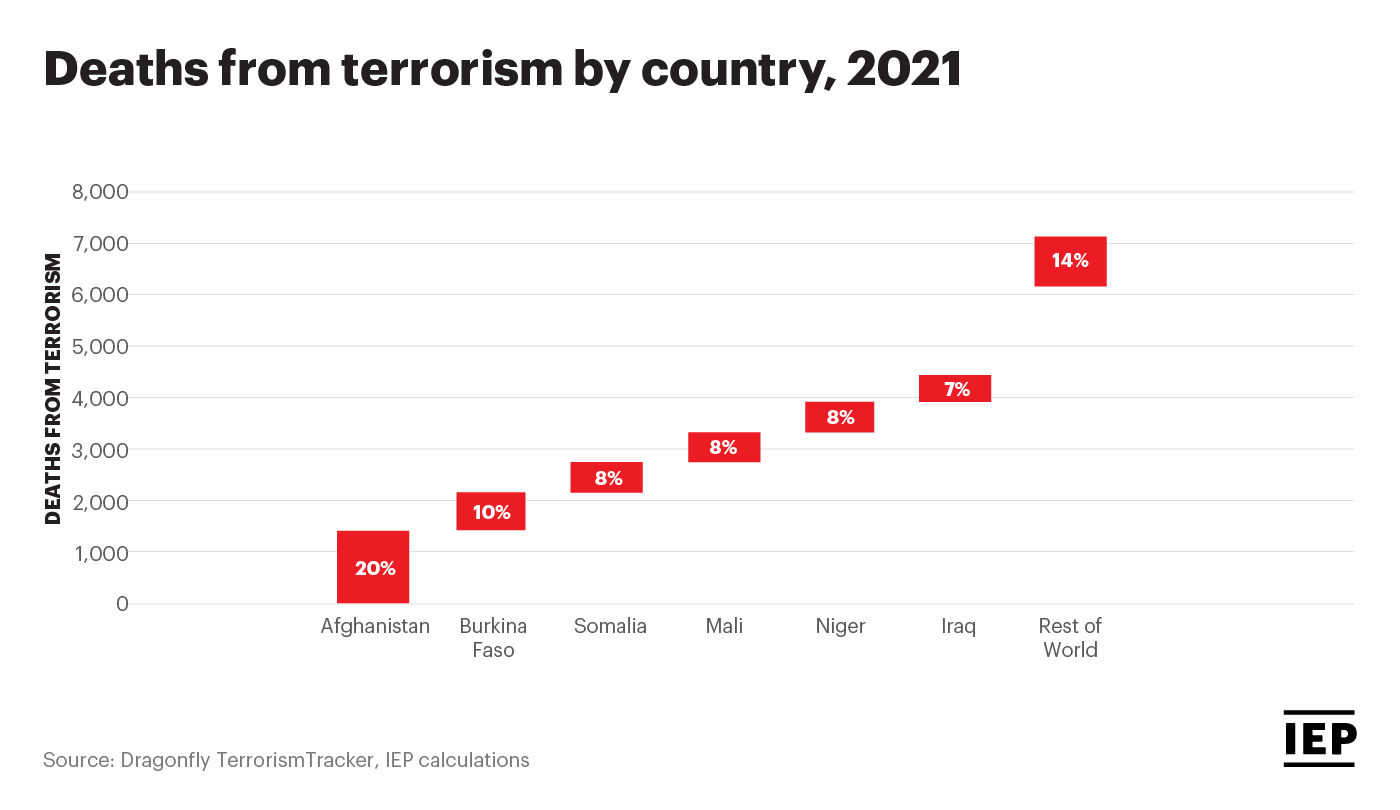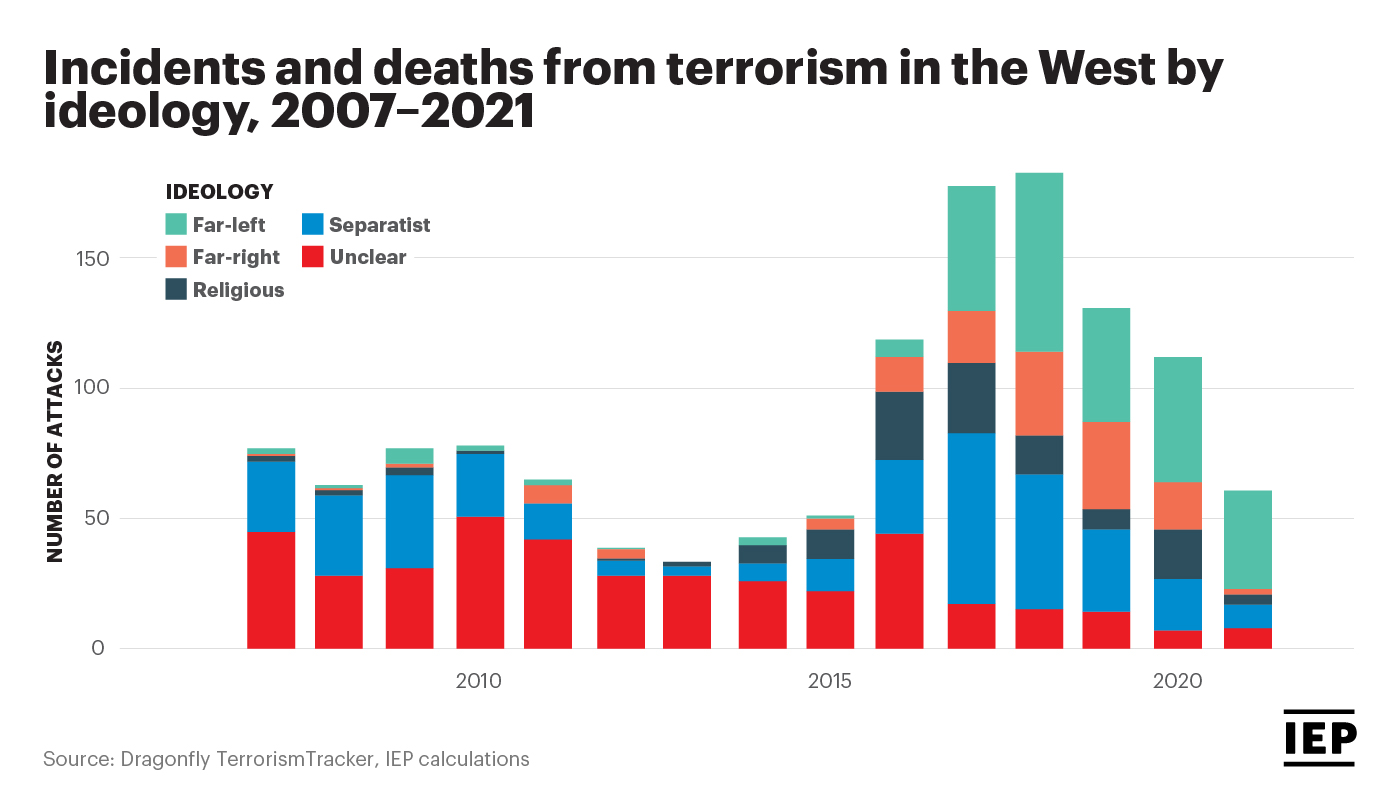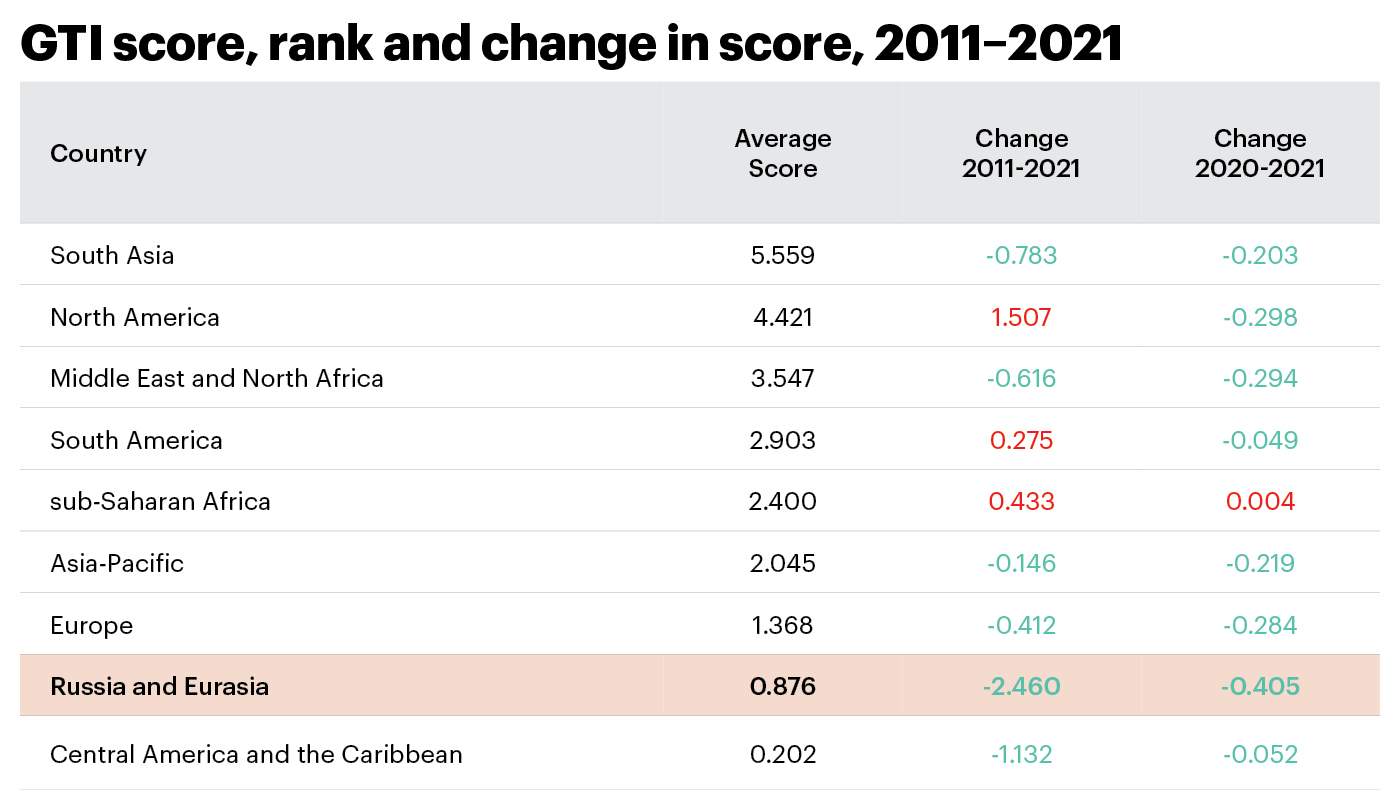The Global Terrorism Index 2022 report provides a comprehensive summary of the key global trends and patterns in terrorism over the last decade. The annual Global Terrorism Index, now in its ninth year, is developed by leading international think tank the Institute of Economics and Peace (IEP) and provides the most comprehensive resource on global terrorism trends.
Here are some of the key findings from the Global Terrorism Index 2022 in six charts.
The 2022 Global Terrorism Index (GTI) reveals that despite an increase in attacks, the impact of terrorism continues to decline. In 2021, deaths from terrorism fell by 1.2% to 7,142, while attacks rose by 17%, highlighting that terrorism is becoming less lethal. Two thirds of countries recorded no attacks or deaths from terrorism – the best result since 2007 – while 86 countries recorded an improvement on their GTI score. The number of deaths has remained approximately the same for the last four years.

The Index highlights that terrorism remains a serious threat, with Sub-Saharan Africa accounting for 48% of total global deaths from terrorism. Four of the nine countries with the largest increases in deaths from terrorism were also in sub-Saharan Africa: Niger, Mali, the DRC and Burkina Faso.

Following military defeats in Syria and Iraq, IS shifted its attention to the Sahel, with deaths from terrorism rising ten times in the region since 2007. The Sahel has become the new epicentre of terrorism. Terrorism in the region is compounded by high population growth, lack of adequate water and food, climate change and weak governments. Adding to the complexity, many criminal organisations are representing themselves as Islamic insurgencies.

In 2018, the number of deaths and incidents from political terrorism was higher than any other form for the first time since 2007. Political terrorism has increased steadily over the last decade, with 73 per cent of attacks in the West being attributed to politically motivated groups and individuals.

The four terrorist groups responsible for the most deaths in 2021 were Islamic State (IS), Al-Shabaab, the Taliban and Jamaat Nusrat Al-Islam wal Muslimeen (JNIM).These four groups were responsible for 3,364 deaths from terrorism, representing 47 per cent of total deaths in 2021.
Islamic State (IS) and its affiliate groups Islamic State – Khorasan Province (ISKP), Islamic State – Sinai Province (ISSP), and Islamic State in West Africa (ISWA) recorded the most attacks and deaths of any terrorist group in 2021. IS deaths represented 29 per cent of all deaths from terrorism globally in 2021.

Ukraine is likely to see an uplift in terrorism. In the 2014 crisis, the country recorded 69 terrorist attacks. Of serious concern are the knock-on effects of cyber terrorism to other countries. In addition to cyberattacks on the Ukraine, Russia has been credited with attacks on many other countries. It is possible that the threat of cyber terrorism will rise globally alongside the escalation of the Ukraine conflict.
The Ukraine conflict is likely to reverse gains in Russia and Eurasia, which recorded the largest improvement on the GTI in 2021, followed by North America.

Download the Global Terrorism Index 2022 report here.
View the Global Terrorism Index Maps and investigate the data.